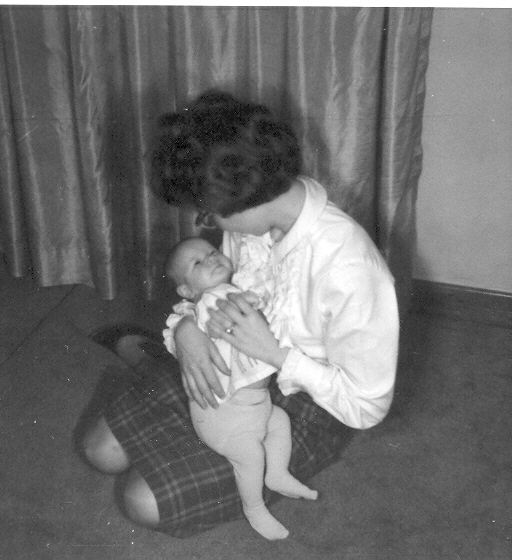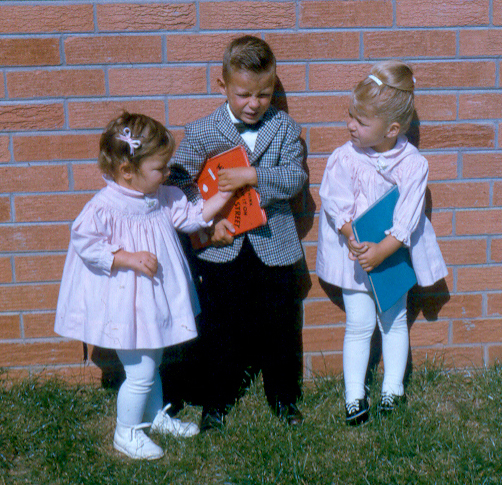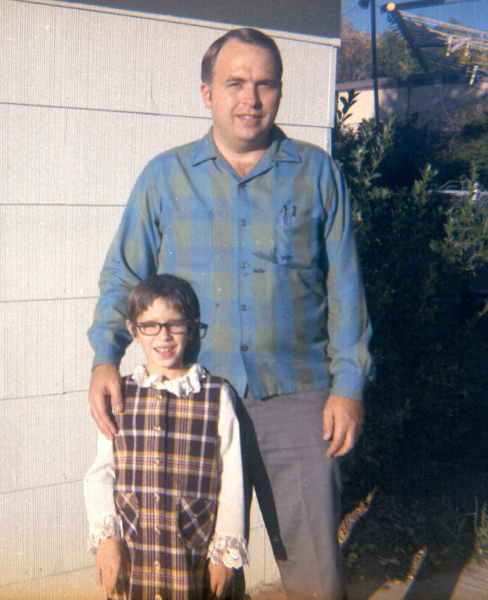Adopting a Special Needs Child
Our third adopted daughter faced some serious mental challenges.
We didn’t know our baby girl was a special needs child. We had some concerns when we first met her, but there was no diagnosis or hard evidence that she would be faced with serious mental challenges.
The first time we saw her was at a community hospital/orphanage in Stuttgart, Germany. She was two months old. We were told by the Jugandamt (German government adoption officer) that a two-month-old baby girl would be available for adoption in one more month. We could go by and see her, then decide if we wanted her or not. Our adrenalin was running on high. We could hardly wait. We had already adopted two children through this office and were excited at the prospect of finding another child. We had been praying for this moment. Our time in Germany was running out– there were only 8 months left before my husband’s tour of duty as a U.S. Air Force pilot would be over and we would have a new assignment back in the United States.
When the nurse brought her out to us we were surprised to see how expressionless she was. There were streaks of tears that ran from the corner of her eyes to her tiny ears. Those little ears were full to the brim of tears. She must have spent most of her days lying on her back, crying. So sad. I took this precious child in my arms and smiled at her. We talked a little baby talk with her to encourage a smile. There was none. Her expression didn’t change. It was completely blank.

I held her closer, then looked into her eyes and gently whispered, “Do you want to be my baby?” She answered with a tiny, but genuine little smile. I said to my husband, “She smiled! She’s ours! She wants us, she needs us.” He agreed.
With that we made arrangements to pick her up and bring her home at the earliest possible date they would release her. Due to that dreadful law that babies must be three months old before being allowed to be adopted, we had to wait another month. Those three months without parental love took a tragic toll on her. Though not the entire cause of her problems, it definitely contributed to them.
We brought her home at Christmas time, and named her Carol—our little Christmas Carol. Two little siblings greeted her with enthusiasm. She learned to smile, even laugh. She was a very good baby.
As she grew I became increasingly concerned. Her development seemed slow to me so I discussed it with the doctor. Flight surgeons are great for pilots, but they aren’t the best pediatricians, though they do try. He said, “She’s just a little slow, but she’ll be okay. Stop worrying.” With that we pressed forward, thinking she would be just fine.
However, I knew in my heart she wasn’t “just fine”. When we arrived in the states and were settled into a new location we took our children in for physical exams. Again, we were assured that she was just a little slow but would catch up. She would not crawl but would roll around when put on the floor. We worked with her to encourage her to crawl, but she never did. She sat up later than our other two. She showed signs of wanting to walk and we helped her stand up by the couch. She walked along it and eventually ventured out and began walking at about 18 months. She did just fine walking after that, even running all over, and getting into more than her share of mischief.
The main concern came when she didn’t seem to understand instructions. It was frustrating. We muddled along, hoping she would catch up at some point. Finally when she was almost five years old and would be going to kindergarten I took her to a specialist recommended by the school for testing. He discovered that she was indeed way behind in her mental development. He recommended therapy to help her.
I worked with her everyday doing what he called patterning. It took four people, so women from our church volunteered to help me since Gary was at work. They were angels. We had to do it twice a day. She was laid on her tummy on a pad on the kitchen table with someone at each of her arms and legs. Then we would move her limbs in a crawling motion, just as the doctor had instructed. After ten minutes of this my angel helpers would go home and return in four hours.
I would then get down on the floor with her and encourage her to crawl to a designated place. Believe me when I say a walking four-year-old does not want to do this. She would cry and refuse. I had to use all my wiles to convince her. I would have toys and fun things to do at the end of each crawl. I cajoled, sang to her, did everything I knew how to convince her to keep crawling for another twenty minutes. It was exhausting. The doctor said this part was crucial for the plan to work.

After two grueling months of this Carol completely rebelled. She screamed at the mention of it and refused to cooperate, and nothing I did could change her mind. The doctor said, “You have to stop. This isn’t working.” He said the only option for her was to be put her into a special education kindergarten class. And that’s where she stayed, in special ed, throughout elementary school. We learned to live with it and just do the best we could. I spent a lot of time at the school. At times I felt so sad I cried, as did my husband. We wanted so much more for her. At one point we decided we just needed to accept her the way she was and laugh more than we cried. We literally said the words, “Let’s laugh more than we cry.” So we started looking for little things to laugh about and find happiness in, regarding her situation.
One day, shortly after we made that decision, she gave us the perfect opportunity. I caught her hitting her brother over the head and was reprimanding her. She looked up at me with her big brown eyes and said, “But I can’t help it. I’m brain bandaged.” I had never heard that before. It was funny! I couldn’t laugh then, but I sure did when I told my husband that evening, and so did he. He said, “She’s smarter than we think.”

Upon entering junior high we felt she needed to be with “normal” kids so she could pick up on normal behavior. I worked with the school to make it happen. She was examined by a neurologist to see what her IQ level was. It was low. He told us, “Hers is the saddest kind of mental disability. She knows what normal is but will never be able to function at that level. It will frustrate her all her life.”
He was right on. She stayed in the regular classroom with amazingly patient teachers and students working with her, experiencing the very frustrations he mentioned. In high school she was back into special ed classes. She graduated with a “special” certificate. A happy girl, for sure, as she heard her name and walked across the stage.
The challenges continue and in future articles I’ll give more details. We learned so much about what can be done to help children with disabilities. Most of all we’ve learned to focus on her abilities instead. We discovered that our love for her is her greatest asset, and ours. She is indeed a special child. And some days she still drives me crazy. But then I hug my husband and we remember to laugh at the humorous moments. When they’re not staring us in the face, we look for them, and we find them.